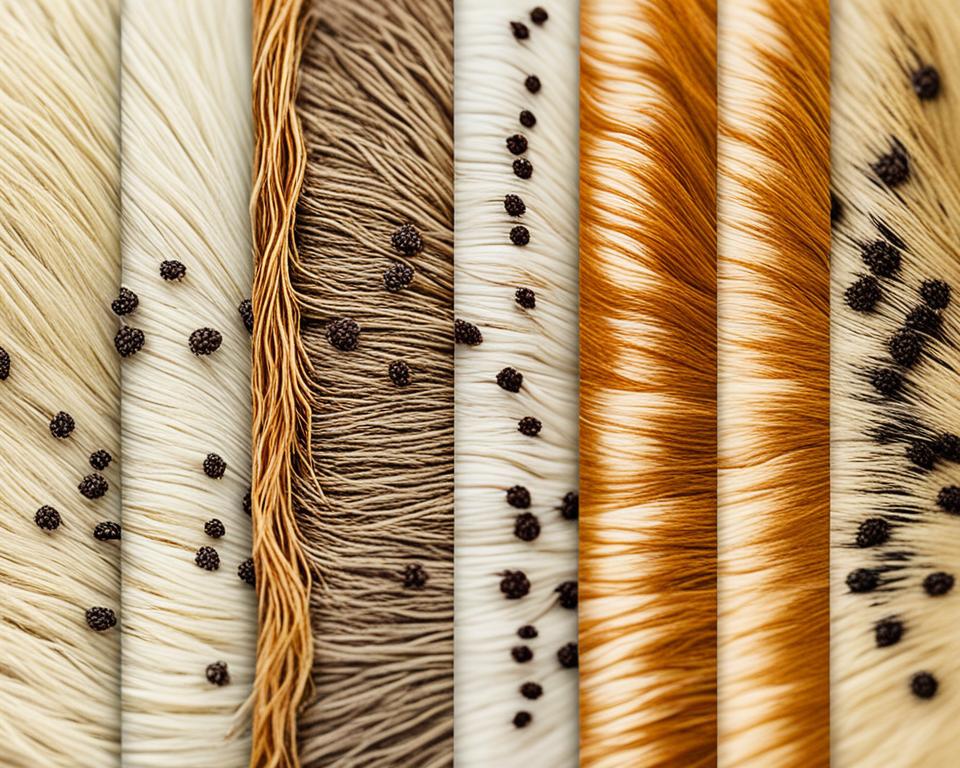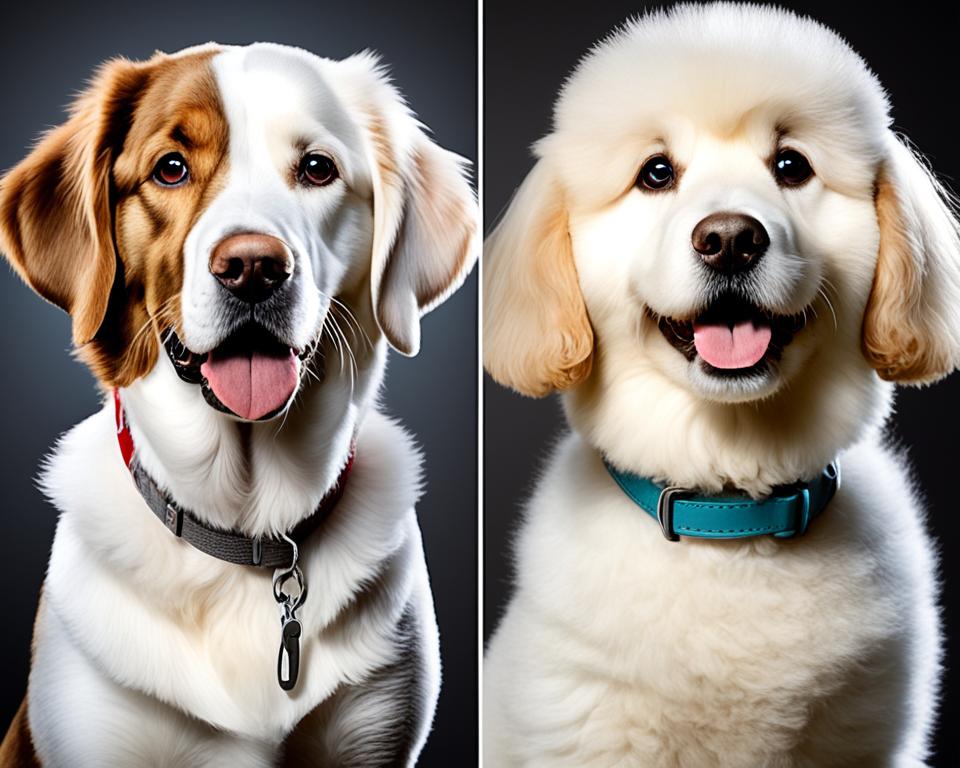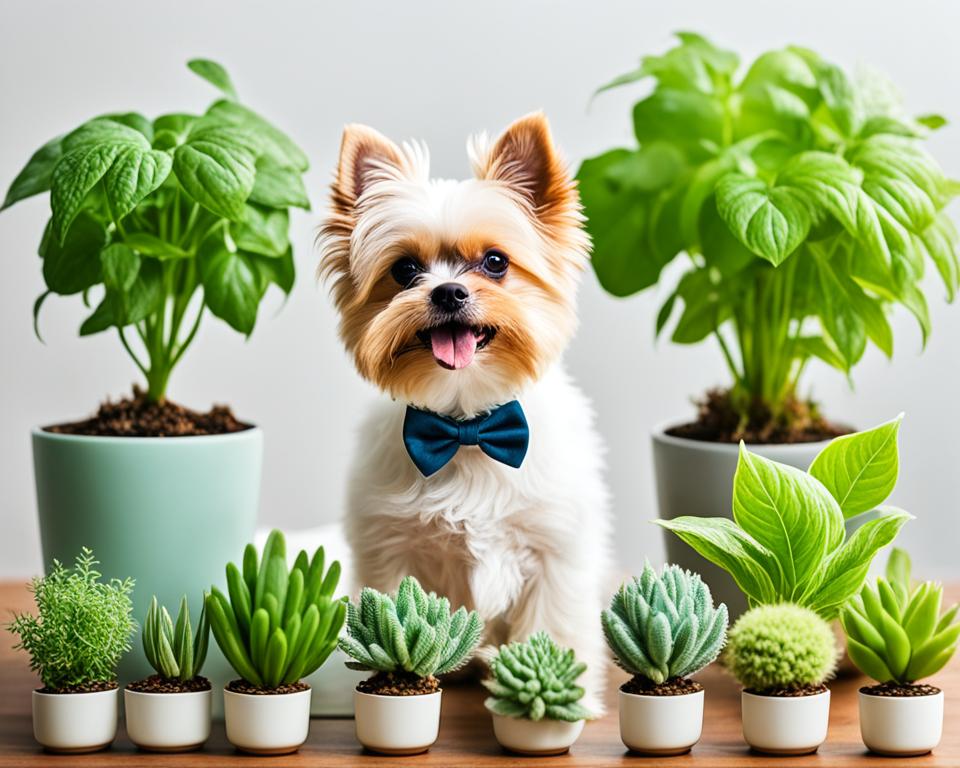How Fast Does Dog Hair Grow: Understanding Canine Coat Regrowth
Discover how fast dog hair grows, factors affecting growth rate, and breed variations. Learn about the hair growth cycle and grooming tips for a healthy canine coat.

Ever noticed how some dogs always look fresh, even after a few weeks? It’s all about how fast their hair grows back. Each dog’s fur has its own story of growth and renewal.
Dog fur grows back at different speeds. Some dogs seem to get new fur quickly, while others take longer. This shows how important fur is for dogs. It helps them stay warm or cool, and protects them from the weather.
Knowing how fast dog hair grows is key for pet owners. It helps with grooming and caring for your pet. Let’s explore the science behind how dogs’ coats renew and how fast they grow back.
The Importance of Dog Hair and Its Growth Cycle

Dog hair is key to their health and comfort. Knowing how dog fur grows helps owners manage shedding and grooming well.
Protective Functions of Dog Hair
A dog’s coat acts as a natural shield. It keeps their body temperature right, protects against injuries, and guards against the environment. Dogs have special follicles that can grow up to 15 hairs from one spot, unlike humans who have only one hair per follicle.
Four Stages of Dog Hair Growth
The dog shedding cycle has four stages: anagen (growth), catagen (transition), telogen (rest), and exogen (shedding). Dogs that shed a lot have more hairs in the rest phase, causing seasonal shedding. “Non-shedding” breeds like Poodles have more hairs in the growth phase, so they shed less often.
Factors Influencing Hair Growth Speed
Many things affect how fast a dog’s hair grows. Breed, age, and health are big factors. What they eat is also important, with about 30% of their diet going to their skin and hair. The environment and stress can also change how their fur grows. Some dogs need daily brushing to keep their shedding under control.
How Fast Does Dog Hair Grow: Timelines and Expectations

Dog hair growth varies a lot between breeds. It’s important to know these differences for good grooming. The speed of hair growth tells us how often we need to groom our pets and keep their coat at the right length.
Average Growth Rates for Different Breeds
Dog breeds have different hair growth speeds. Short-haired breeds like Beagles grow their hair back faster than long-haired breeds such as Shih Tzus. This affects how we manage their hair and how often we need to groom them.
Estimating Full Coat Regrowth Time
It can take anywhere from one month to a year for a dog’s full coat to regrow. Short-haired breeds might regrow their coat in 30-60 days. Long-haired breeds can take up to 12 months. Regular grooming helps keep their coat looking good without needing drastic haircuts.
Variations in Growth Speed Based on Health and Age
A dog’s health and age greatly influence how fast their hair grows. Younger, healthier dogs grow their hair back faster. Puppies change their coat as they grow, which can change how fast their hair grows. For the best advice, talk to a vet. Regular vet visits and good nutrition help keep their hair growing well and their coat healthy.
Factors Affecting the Rate of Dog Hair Regrowth

Dog hair growth is affected by many things. Breed is a big factor in how fast hair comes back. For example, Yorkshire terriers have a longer growing phase, so their hair gets quite long before it falls out.
Age and health also play a role in hair regrowth. Older dogs or those with health problems may grow hair slower. A good diet is key for healthy hair. Dogs need the right amount of protein, B vitamins, and copper to avoid dry, brittle, or thin coats.
Environmental factors and stress can change how dogs shed their hair. Seasonal changes often make dogs shed more. Hormonal issues can also lead to hair loss, like low thyroid levels making coats thin.
Skin conditions affect hair growth too. Bacterial infections like pyoderma can cause hair loss. These usually get better in a month with the right treatment. Parasites like fleas or mange mites can also cause hair loss in dogs.
To manage shedding, focus on a balanced diet, regular grooming, and treating health issues quickly. If you see your dog losing hair and it’s not normal, see a vet for help.
Promoting Healthy Hair Growth in Dogs
A proper dog coat maintenance routine is key for healthy hair growth. Regular brushing spreads natural oils, removes dead hair, and boosts blood flow to the skin. For breeds like Labrador Retrievers, which regrow their coat in 13.6 to 15.4 weeks, consistent grooming helps.
What a dog eats is crucial for hair growth. A balanced diet with proteins, omega-3 fatty acids, and vitamins A and E supports hair growth. This is especially true for breeds with longer growth cycles, like Poodles or Afghan Hounds.
Grooming your dog is more than just brushing. It includes regular baths with the right shampoos, and avoiding too many baths. For double-coated breeds like Siberian Huskies, which may take up to a year for full coat regrowth after shaving, gentle grooming is key. Remember, patience is important – most dogs grow their fur back in a few weeks to a year, depending on their breed and individual factors.
FAQs
What are the protective functions of dog hair?
Dog hair helps with temperature control, protects against injuries, and keeps out toxins and parasites.
What are the four stages of the dog hair growth cycle?
Dogs go through four stages of hair growth: Anagen (growing), Catagen (preparing for rest), Telogen (resting), and Exogen (shedding).
What factors influence the speed of dog hair growth?
Breed, age, health, and environment affect how fast a dog’s hair grows.
How long does it typically take for a dog’s coat to fully regrow after being shaved or lost?
It can take from 30 days to a year for a dog’s coat to fully grow back. This depends on the breed and other factors.
Do different dog breeds have different hair growth rates?
Yes, breeds have different hair growth rates. Short-haired breeds usually regrow faster than long-haired ones.
How do age and health affect dog hair regrowth?
Young, healthy dogs grow their hair back faster than older or sick dogs.
What factors can impact the rate of dog hair regrowth?
Health issues, allergens, stress, hormonal problems, and seasonal changes can slow down hair growth.
What can be done to promote healthy hair growth in dogs?
For healthy hair growth, groom regularly, feed a balanced diet, consider supplements, exercise often, reduce stress, and fix health problems.





